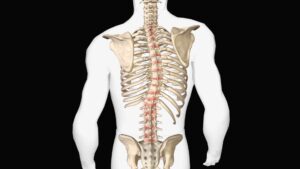Guest Blog by Sue Hitzmann
I’ve just returned from a week in Toronto doing events and trainings. I’ve been home for 48-hours and am already off again to Chicago and next week I will begin a 3-day immersion for the general public on the MELT Method book.
I’m currently reading over the history forms of the participants. Each person has a unique body and many unique issues. It seems like a large number of the women attending have quite a bit of pelvic pain – a hotspot for many women which is what instigated this blog.
Next week I will begin a 3-day immersion for the general public on the MELT Method book. I’m currently reading over the history forms of the participants. Each person has a unique body and many unique issues. It seems like a large number of the women attending have quite a bit of pelvic pain – a hotspot for many women which is what instigated this blog.
Also, while in Utah at Red Mountain Spa, I am also doing a MELT Strength Immersion for MELT Level One Instructors. This beyond sold out event is clearly needed and I hope many of these instructors will gain better tools to help the growing number of women with pelvic pain.
Pelvic pain is something I’ve helped many women eliminate. Although it can be caused by many things from falls, to pregnancy, and even too much flexibility, why they have pain is usually the same issue – sacral rotation or what is frequently called SI Dysfunction.
This disorder is more common in women then men and basically means that the form closure of the very unique joints, the Sacro-Iliac Joints aren’t setting properly. This triangular bone, the sacrum fits like the keystone of a bridge in between the two pelvic bones called the Ilia. The sacro-iliac joints are the tiny vertical joint spaces in between the two pelvic bones. They have very little motion however, their ability to move is paramount in pelvic stability and positioning. For decades physicians had a hard time believing a joint with such little motion could cause so much pain yet we know now it’s the keystone to ideal spinal integrity.
There are two ways the keystone stays in place. One is called “Force Closure” which refers to the muscle and ligamentous integrity that holds the structures in place. Form Closure refers to the natural shape of the joint and how it fits (or not) together. Force closure can be improved through very specialized exercises that reintegrate the timing of these deep muscles and ligaments, usually applied by a manual therapist. Form closure can also be helped depending upon what’s causing the actual issue in the shape discrepancy.
So what causes the sacrum to rotate? It can be caused by many factors including poor posture, bad lifting techniques, or changes in the pelvic region and lower spine caused by hormonal imbalances, pregnancy, or falls and injuries. Childbirth certainly can cause a grave change in the form closure of this joint. And for those of you who are obsessed with working out your booty, sadly, your sacrum can be held in a bad position by tight muscles that are being strengthened with bad form or pelvic positioning. Although exercises like the old classic “Fire-hydrant” where you are in a quadruped position and externally rotate your leg to the side may make your hip and butt burn but it could cause issues in the sacral position over time. Poorly executed hip extension motions may still make your butt look more lifted but if you over-do it, you could cause pain problems too.
Having a sacrum that is unstable can cause a lot of pain and discomfort not only in the pelvis but down the legs, into the hips, knees, ankles, and even cause foot pain. The muscles that support the positioning of the sacrum as well as the entire alignment of the body are culprits to pelvic instability as well.
When someone has great issues in this joint it’s best to seek out a manual therapist to restore it’s positioning whenever possible. One of my veryfavorite practitioners who has had great success is Erik Dalton. He and Gil Hedley (shown here in the image) have been great teachers for me to reference over the years on many topics regarding the pelvis and it’s many roles as our center of gravity in motion. On Erik’s website, you can find many articles and more information on this issue at the link above. I found this one and have sent it on to many people asking about pelvic pain.
In his article he states, “Frequently, muscle imbalance patterns develop as tissues become strained from overuse, underuse or abuse. In the early stages of a typical SI pain episode, protective muscle spasm arises as the sacrum gets stuck side-bent and rotated between the ilia, usually from a forward-bending and twisting incident. Sustained isometric contraction produces muscle toxicity and weakness causing increased SI ligament loading and overstretching. As the articulating joint surfaces become jarred loose, ligament microtearing creates an inflammatory response.”
It’s imperative to understand that the SI Joint is different from other, hinge type joints. It’s more of a gliding joint that has an axis of rotation uncommon to other joints. Traditional exercises rarely help this issue and it takes a specific protocol to restore the SI joint mobility (which is frequently lost) as well as it’s force closure integrity with isolated stability techniques.
Beyond what’s in the MELT Method book is an entirely other level of training and learning called MELT Strength. In this program I teach instructors how to reintegrate the timing of the deep stabilization mechanisms we are all possess and how to repattern movement when the integrity of joint stability is absent.
With MELT Strength, there are many moves that directly affect the integrity of the SI Joint and improve its ability to remain stable. There are also key MELT Length moves to help support the integrity of the ligamentous and connective tissue architecture to improve its natural positioning which does help with the joints form closure. Together, knowing how to use a SI Joint MELT Map that combines MELT Length and Strength Sequences for SI Joint stabilization is what a certified MELT Instructor can help to develop with you.
There is no question, having a brilliant hands-on therapist who knows how to treat SI rotation is the very best scenario. There are key hands-on techniques that work well to give immediate changes – the problem is your daily life just puts it back where it was unless you are able to do homework to improve the integrity of the stabilization elements around the joint. I have to tell you, there aren’t many therapists who know how to evaluate, treat, and then give homework to remedy this issue. And if it’s done incorrectly, it can actually increase pain and trigger points.
If you think you may have an SI issue or sacral torsion or rotation, I’d first suggest you get some hands-on evaluation by a qualified manual or physical therapist that can address the initial query. If you have been going to see a therapist and getting no resolve however, I’d suggest you seek out one of our instructors to learn how to self-treat this issue daily.
I hope that, with the new and improved MELT Rollers coming out next month, I’ll be able to re-shoot the MELT videos and get more on-line support for those of you not around one of our instructors. There is more coming and I hope to help you resolve your pelvic pain if you have it.









